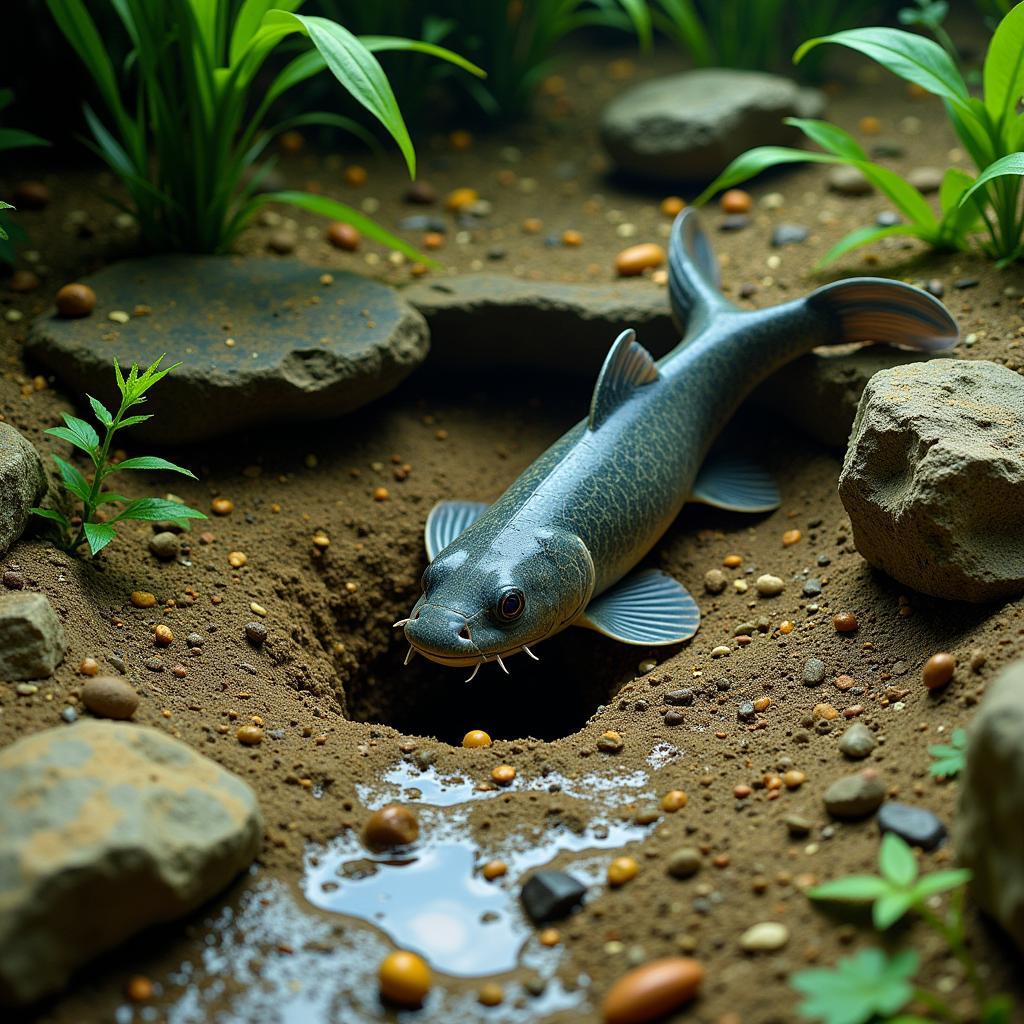Exploring African Animal Habitats: A Diverse Ecosystem
African Animal Habitats are incredibly diverse, ranging from lush rainforests to arid deserts and sprawling savannas. This diversity supports a vast array of animal life, each species uniquely adapted to its specific environment. Understanding these habitats is crucial to appreciating the intricate web of life that makes Africa so unique. Let’s embark on a journey to discover the wonders of these ecosystems and the creatures that call them home.
African habitats, diverse and captivating, offer a glimpse into the wonders of nature. From the vast savannas teeming with wildlife to the dense rainforests harboring unique species, each environment plays a vital role in the intricate balance of the African ecosystem. african animals and their habitats provides a comprehensive overview of these fascinating ecosystems.
The Savanna: A Kingdom of Grasslands
The savanna, perhaps the most iconic African animal habitat, is characterized by vast grasslands dotted with acacia trees. This ecosystem experiences distinct wet and dry seasons, shaping the lives of the animals that reside there. The dry season forces many animals to migrate in search of water and food, creating dramatic scenes of mass movement.
The savanna supports large herds of herbivores like zebras, wildebeest, and elephants, which in turn attract predators such as lions, cheetahs, and hyenas. The interplay between predator and prey is a constant drama that unfolds on the savanna stage.
Rainforests: A Realm of Biodiversity
African rainforests, found in the Congo Basin and other parts of the continent, are a haven for biodiversity. These dense, humid forests are home to a dazzling array of plant and animal life, many of which are found nowhere else on Earth. The towering trees create a canopy that filters sunlight, creating a unique microclimate beneath.
Gorillas, chimpanzees, and other primates thrive in the rainforests, swinging through the trees and foraging for fruits and insects. Colorful birds flit through the foliage, their calls echoing through the forest. The rainforest floor is a world of its own, teeming with insects, reptiles, and amphibians.
Deserts: Adapting to Extremes
The Sahara Desert, the largest hot desert in the world, presents a stark contrast to the lush rainforests and savannas. Here, extreme temperatures and scarce water resources create a challenging environment for life. Yet, even in this harsh landscape, animals have adapted to survive.
Camels, known as the “ships of the desert,” are perfectly suited to the arid conditions. Their ability to store water and tolerate high temperatures allows them to traverse the vast expanse of sand. Other desert dwellers, such as scorpions and reptiles, have developed strategies to conserve water and avoid the scorching sun. african animals and their habitats ks1 offers a simpler explanation of these habitats, ideal for younger audiences.
Coastal Regions: Where Land Meets Sea
Africa’s extensive coastline is home to a variety of habitats, from sandy beaches to rocky shores and mangrove forests. These areas support a rich diversity of marine life, including sea turtles, dolphins, and whales. Coastal birds, such as pelicans and flamingos, gather in large flocks, creating spectacular displays.
Mangrove forests, found in intertidal zones, play a vital role in protecting coastlines from erosion and providing nurseries for many marine species. They also serve as important habitats for a variety of terrestrial animals. african habitats and animals explores the interconnectedness of these coastal ecosystems.
Dr. Anika Malima, a renowned wildlife ecologist, emphasizes, “Understanding the interconnectedness of African animal habitats is key to conservation efforts. Each ecosystem plays a vital role, and the loss of one can have cascading effects on others.”
Professor Emeka Nkosi, an expert in African biodiversity, adds, “The diversity of African animal habitats is a testament to the power of adaptation. Animals have evolved remarkable strategies to thrive in even the most challenging environments.”
Conclusion
African animal habitats are a testament to the incredible diversity of life on Earth. From the vast savannas to the dense rainforests, each ecosystem plays a crucial role in maintaining the delicate balance of nature. By understanding and protecting these habitats, we can ensure the survival of the magnificent creatures that call them home. African animal habitats are vital for the survival of many species. Let’s continue to explore and protect these vital ecosystems. african animals eyfs activities offers engaging activities for early years learning about African animals.
FAQ
- What is the largest African animal habitat? The savanna.
- What is the most biodiverse African animal habitat? The rainforest.
- What animal is best adapted to the Sahara Desert? The camel.
- What are mangrove forests? Coastal ecosystems that protect shorelines and provide habitats for diverse species.
- Why are African animal habitats important? They support a wide range of wildlife and contribute to the overall biodiversity of the planet.
- What are some of the threats to African animal habitats? Habitat loss, climate change, and poaching.
- How can we help protect African animal habitats? Support conservation organizations, reduce our carbon footprint, and educate ourselves and others about the importance of biodiversity.
Related Scenarios
- A tourist wants to know the best places to see specific animals like lions or gorillas in their natural habitat.
- A researcher is studying the impact of climate change on different African ecosystems.
- A student is writing a report about the unique adaptations of animals living in the Sahara Desert.
Further Exploration
If you are fascinated by African wildlife, you might also be interested in learning about the african antelope with twisted horns.
When you need support please contact us by Phone: +255768904061, Email: kaka.mag@gmail.com Or visit our office: Mbarali DC Mawindi, Kangaga, Tanzania. We have a 24/7 customer service team.

